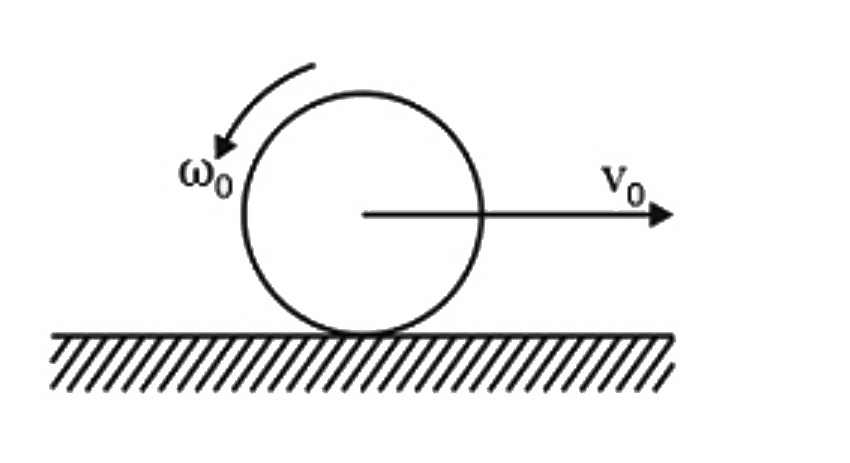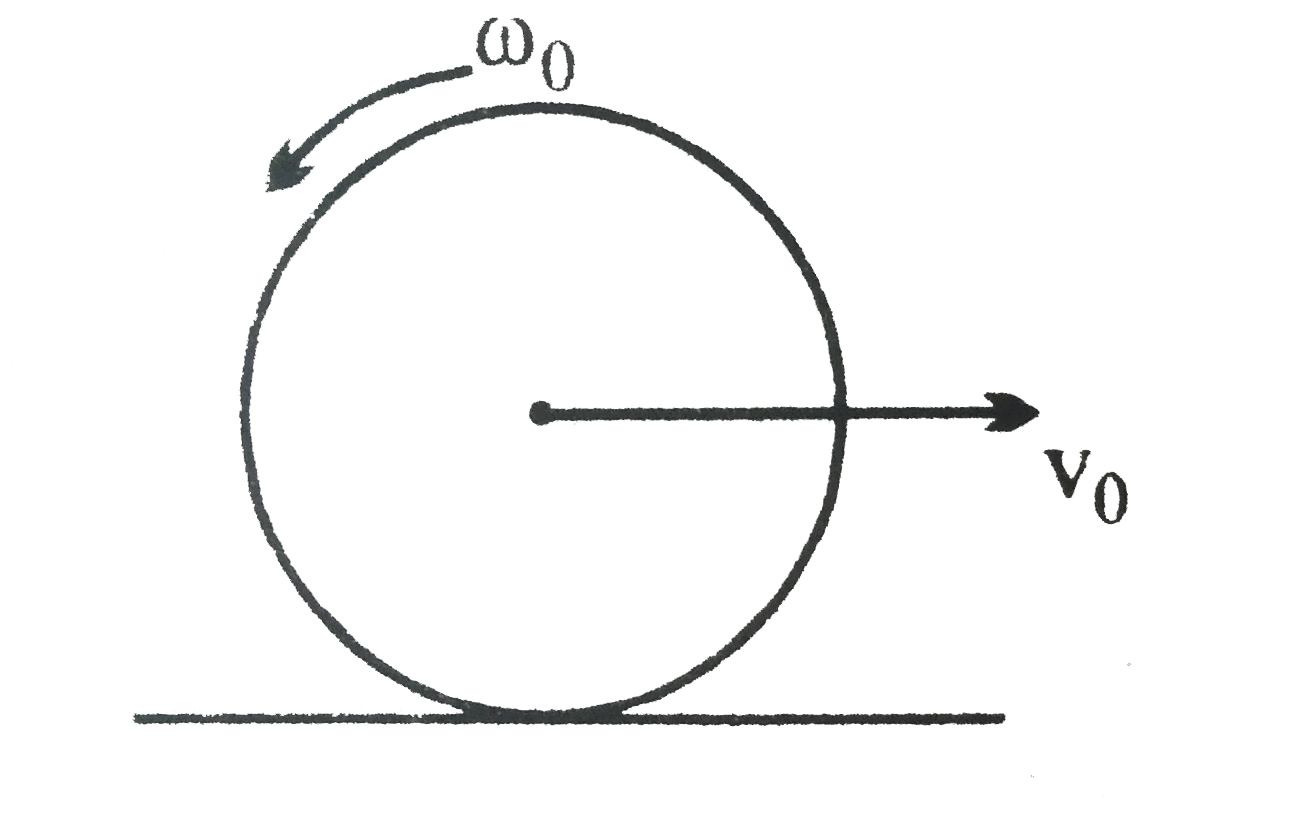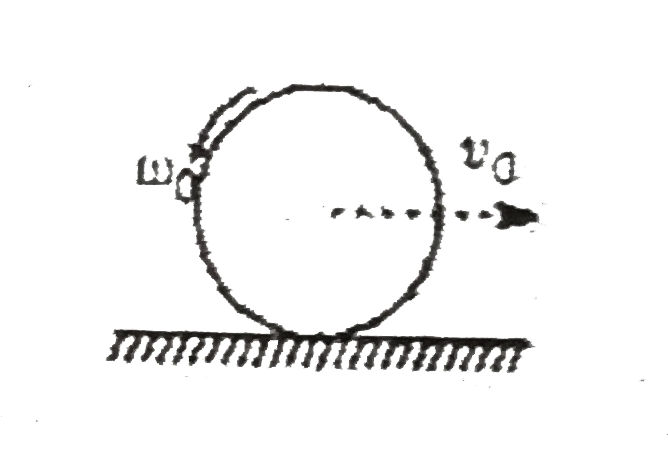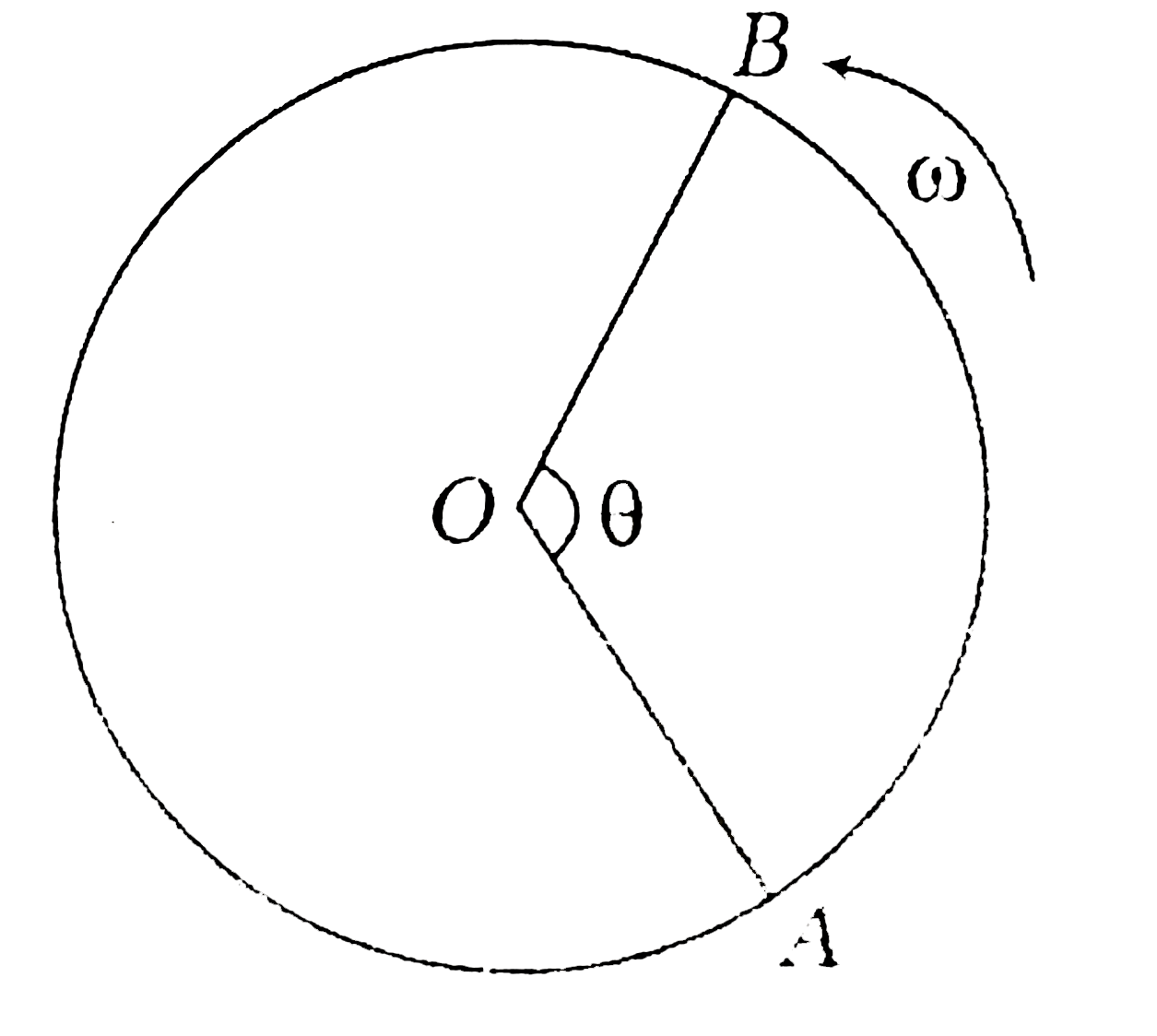A uniform circular disc placed on a horizontal rough surface has initially a velocity v0 and an angular velocity ω0 as shown in the figure. The disc comes to rest after moving some distance in the direction of motion. Then v0/ω0 is :

12
1
32
2
The correct Answer is:A
Step by step video, text & image solution for A uniform circular disc placed on a horizontal rough surface has initially a velocity v_(0) and an angular velocity omega_(0) as shown in the figure. The disc comes to rest after moving some distance in the direction of motion. Then v_(0)//omega_(0) is : by Physics experts to help you in doubts & scoring excellent marks in Class 11 exams.
Updated on:21/07/2023Topper's Solved these Questions
- RIGID BODIES AND ROTATIONAL MOTIONBOOK - PHYSICS GALAXY - ASHISH ARORACHAPTER - RIGID BODIES AND ROTATIONAL MOTIONEXERCISE - paragraph
24 Videos
- RIGID BODIES AND ROTATIONAL MOTIONBOOK - PHYSICS GALAXY - ASHISH ARORACHAPTER - RIGID BODIES AND ROTATIONAL MOTIONEXERCISE - MCQ
16 Videos
- RIGID BODIES AND ROTATIONAL MOTIONBOOK - PHYSICS GALAXY - ASHISH ARORACHAPTER - RIGID BODIES AND ROTATIONAL MOTIONEXERCISE - Conceptual MCQs Single Option Correct
39 Videos
- NEWTONS LAWS OF MOTIONBOOK - PHYSICS GALAXY - ASHISH ARORACHAPTER - NEWTONS LAWS OF MOTIONEXERCISE - Unsolved Numerical Problem
81 Videos
- WORK, ENERGY AND POWERBOOK - PHYSICS GALAXY - ASHISH ARORACHAPTER - WORK, ENERGY AND POWEREXERCISE - unsolved
1 Videos
Similar Questions
A uniform circular disc of radius r placed on a rough horizontal plane has initial velocity v0 and angular ω0 as shown. The disc comes to rest after moving some distance in the direction of motion. Then

View Solution
A disc of radius R has linear velocity v and angular velocity ω as shown in the figure. Given υ=rω find velocity of point A, B, C and D on the disc.
View Solution
Knowledge Check
A uniform circular disc placed on a rough horizontal surface has initially a velocity v0 and an angular velocity ω0 as shown in the figure. The disc comes to rest after moving some distance in the direction of motion. Then v0rω0 is.
 .A1/2B1C3/2D2
.A1/2B1C3/2D2A uniform circular disc of radius r . 1placed on a rough horizontal plane has initial velocity v0 and an angular velocity ω0 as shown. The disc comes to rest after moving some distance in the direction of motion. Then
 Athe friction force acts in the backwards directionBthe point of contact of disc with ground has zero velocityCv0 must be equal to rω02 in magnitudeDv0 must be equal to 2rω0 in magnitude
Athe friction force acts in the backwards directionBthe point of contact of disc with ground has zero velocityCv0 must be equal to rω02 in magnitudeDv0 must be equal to 2rω0 in magnitudea uniform circular disc of radiu8s r placed on a roughn horizontal plane has initial velocity v0 and an angul,ar velocity ω0 has shown The disc comes to rest after moving some distance in the direction of motion. Then
 Athe friction force acting in the towards directionBthe point of contact of disc with ground has initially zero velocityCv0 must be equal to rω0/2 in magnitudeDv0 must be equal to 2rω0 in magnitude
Athe friction force acting in the towards directionBthe point of contact of disc with ground has initially zero velocityCv0 must be equal to rω0/2 in magnitudeDv0 must be equal to 2rω0 in magnitude
A disc of radius R is moving on a rough horizontal surface with velocity v and angular speed ω at an instant as shown in figure. Choose the correct statement.

View SolutionA uniform solid sphere of mass m and radius r = 3m is projected along a rough horizontal surface with the initial velocity v0=6m/s and angular ω0 velocity as shown in the figure. If the sphere finally comes to complete rest then angular velocity is x rad/s. Find x.

View SolutionA uniform circular disc of radius r is placed on a rough horizontal surface and given a linear velocity v0 and angular velocity ω0 as shown. The disc comes to rest after moving some distance to the right. It follows that

View SolutionA wheel is released on a rough horizontal floor after imparting it an initial horizontal velocity v0 and angular velocityω0 as shown in the figure below. Point O is the centre of mass of the wheel and point P is its instantaneous point of contact with the groundl. The radius of wheel is r and its radius of gyration about O is k. Coefficient of friction between wheel and ground is μ. A is a fixed point on the ground.

If the wheel comes to permanent rest after sometimes, then :
View SolutionA circular disc of radius R is rotating about its axis O with a uniform angular velocity ωrad s−1 as shown in the figure. The magnitude of the relative velocity of point A relative to point B on the disc is

View Solution
